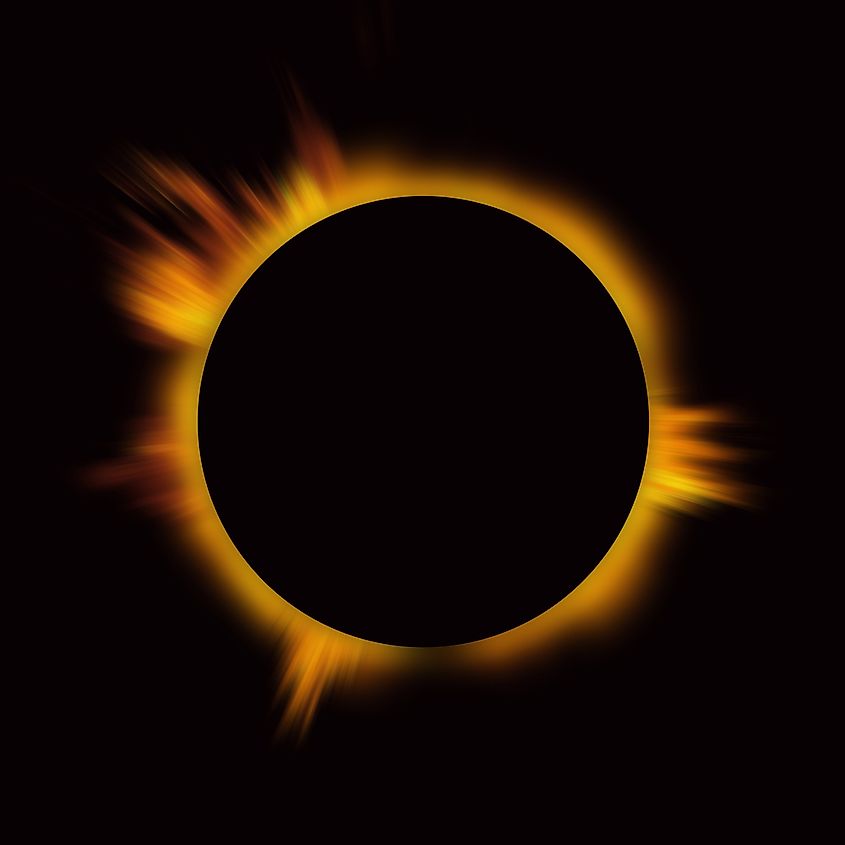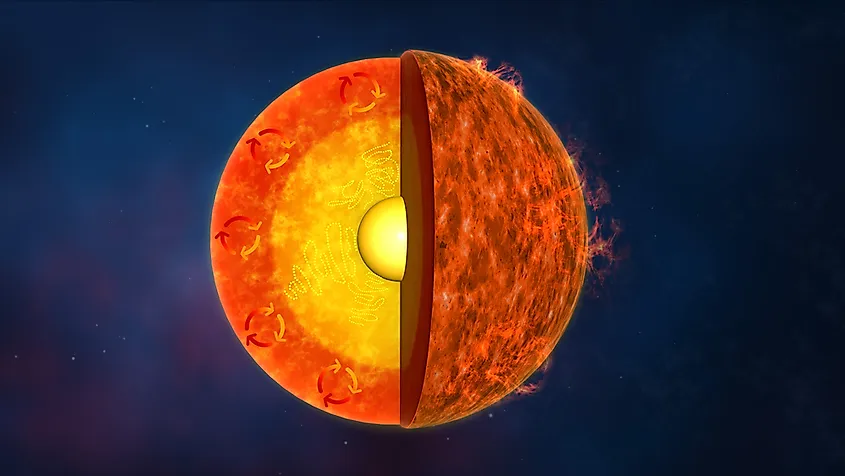All Layers Of The Sun
What Are The Layers Of The Sun?

- The layers of the Sun are divided into two larger groups, the outer and the inner layers. The outer layers are the Corona, the Transition Region, the Chromosphere, and the Photosphere, while the inner layers are the Core, the Radiative Zone, and the Convection Zone.
- There are four outer layers of the Dominicus, and the Corona is the outermost i. Information technology starts at about 1300 miles in a higher place the photosphere, and its temperature is measured to be around 900,000 degrees Fahrenheit.
- At that place are three inner layers of the Sun, and the Convection zone is the outermost ane. It completely surrounds the next layer, the Radiative zone, after which we have the Core, as the innermost layer of the Dominicus.
But like our planet, and nearly other celestial bodies, the Sun is divided into distinct layers. The critical difference is that the Sun is not solid, different Earth, so the layers are a bit harder to determine. Because the Sun is mostly composed of helium and hydrogen and is not solid, information technology does not have an outer purlieus that is clearly divers.
However, we can determine the internal structure of the Sun, and it is made up of seven different layers. The layers of the Sun are divided into ii larger groups, the outer and the inner layers. The outer layers are the Corona, the Transition Region, the Chromosphere, and the Photosphere, while the inner layers are the Core, the Radiative Zone, and the Convection Zone.
The Outer Layers
- Corona
- Transition region
- Chromosphere
- Photosphere
In that location are four outer layers of the Sun, and the Corona is the outermost one. It starts at about 1300 miles in a higher place the photosphere, and its temperature is measured to be around 900,000 degrees Fahrenheit. It is impossible to meet the Corona with the naked eye, but there is an exception. We are able to see it during a solar eclipse, or by using a special device called the coronagraph. There is no upper limit to the Corona.
It is followed by the Transition region, which is an extremely narrow layer that divides the Chromosphere from the Corona. Its width is simply lx miles, which is incredibly small for a layer on a body as big every bit the Sun. This layer marks the spot where the temperatures ascension tremendously since the Corona layer is much hotter than the Chromosphere.

The Chromosphere is the layer we find between the distances of 250 and 1300 miles from the solar surface. The temperatures in this layer vary profoundly, with the parts that are further from the solar surface existence much hotter than the ones that are closer to information technology. Notwithstanding, information technology does not compare to the temperatures that are reached in the Corona layer. Information technology is an interesting thing to notice how the temperature in these layers grows the further abroad nosotros motility from the center of the Lord's day.
The Photosphere is the last, innermost layer of the outer layers of the Lord's day. We are able to observe this layer directly, and its temperatures vary between eleven,000 and half dozen,700 degrees Fahrenheit. The majority of this layer is covered by granulation, which is caused by bubbling gases and sunspots from magnetic fields.
The Inner Layers
- Convection zone
- Radiative zone
- Core
There are three inner layers of the Sun, and the Convection zone is the outermost i. It completely surrounds the side by side layer, the Radiative zone.
In this layer, all of the hot material constitute near the heart of the Sun rises cools downward and drops back into the radiative zone to get more than heat. This is the movement that creates sunspots and solar flares. This layer marks the border of what nosotros ordinarily refer to as the Dominicus.

The radiative zone is the second inner layer of the Sun. Information technology sits exterior of the core, and it holds its extremely high temperature. The zone itself has a temperature of around vii million degrees Fahrenheit. This layer serves as a passage for all the energy that is released past the core. Photons travel through the radiative zone, and they can't travel through long ranges of space, and then it takes almost 50 million years for a photon to travel through this layer of the Sun.
Finally, we have the core, as the innermost layer of the Sun. The core is plasma, just its movement is extremely similar to that of a gas. The temperature of the cadre of the Sun is around 27 one thousand thousand degrees Fahrenheit. In the core, nuclear reactions occur that create helium from hydrogen atoms. This releases huge amounts of energy, and it starts to motility outwards toward the other layers. This free energy eventually becomes the light and oestrus we receive on Earth.
All Layers Of The Sun,
Source: https://www.worldatlas.com/articles/what-are-the-layers-of-the-sun.html
Posted by: hunterpubleausing.blogspot.com


0 Response to "All Layers Of The Sun"
Post a Comment